
What is Scottish Art?
What is Scottish art? What does ‘Scottish art’ actually mean?
Scottish art is a broad term for a body of visual art either from Scotland or about Scotland with no specific time frame or period. As this is quite a wide area we thought we would cover some of the background and history to Scottish art below.
History of Scottish Art
First Examples of Scottish Art (around 10,200 BC -3,200 BC)
The first known examples of art in Scotland are from the Neolithic period and are carved stone balls that have a mysterious quality to them. Some examples have been found at a Neolithic settlement at Skara Brae, Orkney and the decoration carved into the balls echoes the decoration on other artefacts of the period. The stone balls had domed sides that were carved with elaborate spirals, swirls and dots. The symmetrical beauty and numbering patterns of these pieces are intriguing and the fact that they have been found in several different places in Scotland suggest that the creative practice was not from just a single source.
Bronze Age Scottish Art (around 3,200 BC – 600 BC)
From the Bronze Age more carvings have been found including stones with cup and rings marks. Cup and ring marks are also found in Northern England and some of Europe and consist of a depression or hole in the rock with a carved ring or rings surrounding it, sometimes lines leading out from the centre of the circles. The meaning or purpose of these rings is undecided, some say it could be a form of writing, other say they might be religious symbols or possibly just decoration.
Iron Age Scottish Art (around 600 BC – 100 AD)
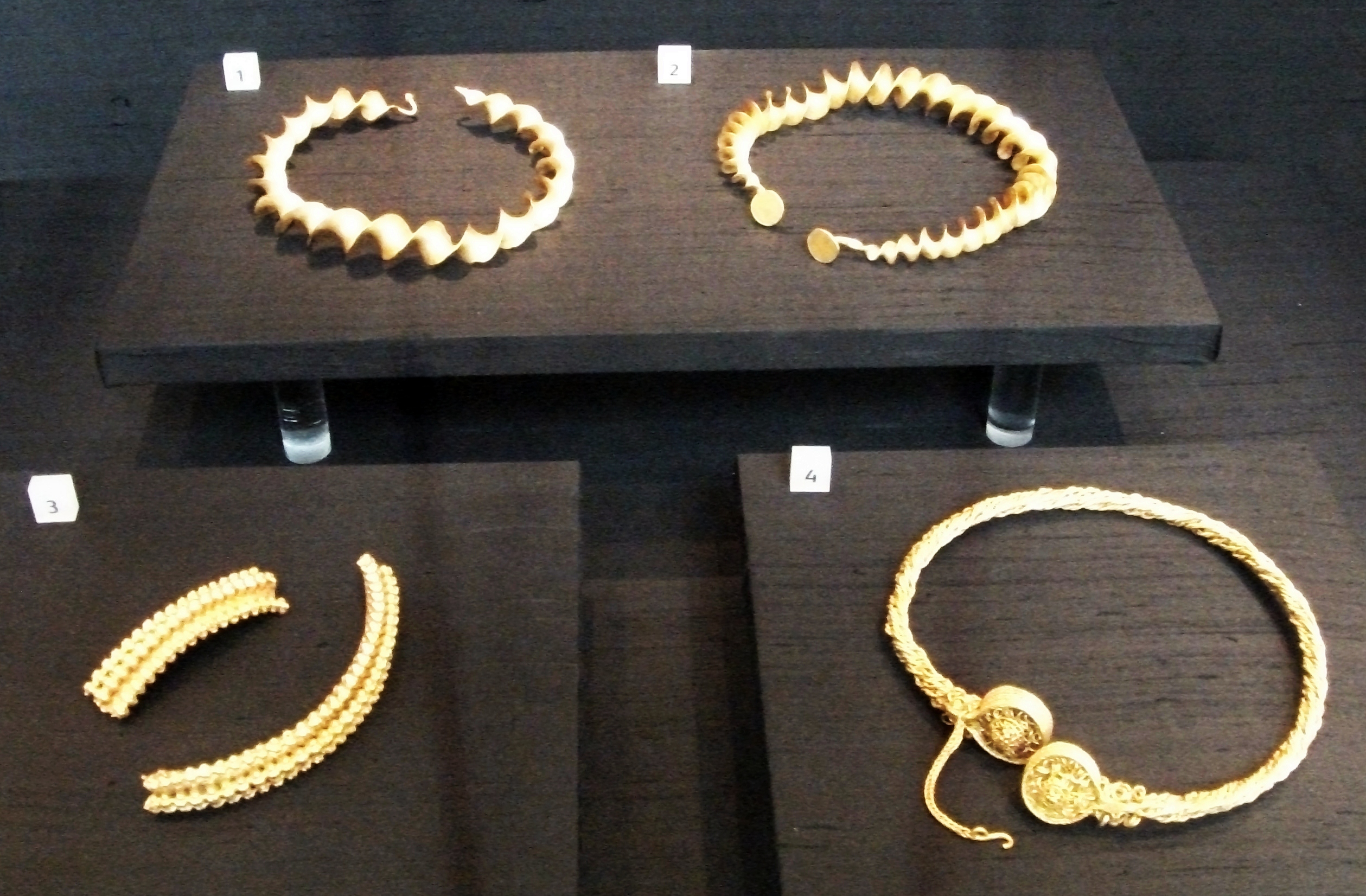
The Iron Age is more commonly associated with the Celts and Celtic art. Celtic art is something that we still see today especially in patterns and jewellery. The Celts love of elaborate decoration on their belongings and the advances in skills for iron smelting and other metals means we have some beautiful examples of Iron Age Scottish Art or Celtic art still around today. One of the more recognised artefacts is the golden torc worn by warriors, often in a knotwork style or intricately designed. Many other pieces of Iron Age jewellery, clothing, mirrors, shields and weapons are also patterned with swirling geometrical designs or stylised figurative subjects and sometimes used for ceremonial purposes.
Middle Ages Scottish Art (around 500 AD – 1400 AD)

The Scottish Art of the Middle Ages comes in many forms, the main one being Pictish art. Pictish stones and metal work were apparent in the early Middle Ages. The stones were beautifully carved monuments positioned upright in the ground. Some had very complex designs with symbols, abstract motifs, figures and animals. There are around 350 Pictish stones that have been discovered over the years and there are still some in their original locations around Scotland or protected in Scottish Museums. Some of the common Pictish symbols include two discs with a Z line between them, mirror with a handle, combs, horse shoes and crescents with V shapes over them.
In the Middle Ages there was lots of social change, conflict and invasions which lead to different influences on Scottish Art. A more common art style came about throughout Great Britain, which is known as Insular art and this was a fusion of Celtic and Anglo-Saxon styles. This was mainly found in stunning examples of illuminated manuscripts.
Renaissance Period Scottish Art (around 1400 AD – 1600 AD)
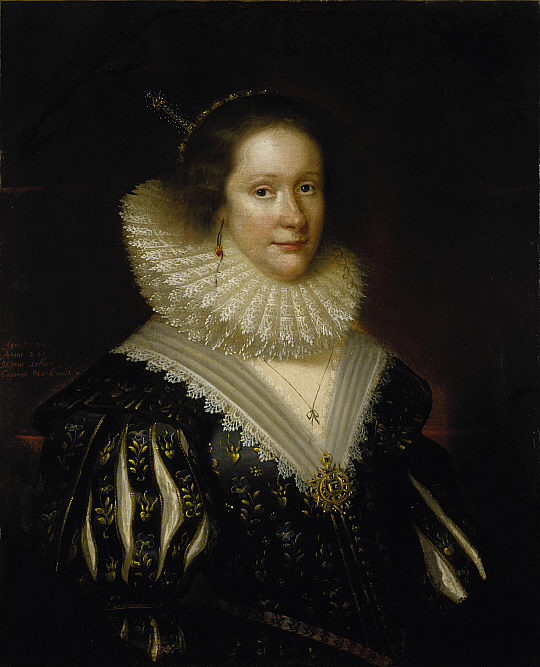
The cultural movement of the Renaissance influenced Scottish Art between 14th and 17th centuries and the Scottish Crown used to use Flemish court painters to keep a record of royalty. Although toward the end of the 17th century some significant Scottish artists emerged such as George Jamesone who was born in Aberdeen and is one of Scotland’s first well known portrait painters and John Michael Wright his pupil. They both painted in the dramatic and exuberant Baroque style.
Eighteenth & Nineteenth Century Scottish Art (around 1700 AD – 1900 AD)

The eighteenth century saw many more Scottish artists become recognised and mainly in the neoclassical style – a style that draws on the classical arts. To name a few there was Gavin Hamilton a painter of historical scenes born in Lanarkshire, Allan Ramsay a portrait painter from Edinburgh, and Alexander Runciman a painter of mythological and historical subjects.
Later on Romanticism can be seen in the portraits of Henry Raeburn who painted directly from life, with realism, great characterisation and unusual lighting effects. He spent most of his time in Edinburgh. Scottish landscape painting during this period also played a major part in the Romantic Movement where it captured the natural beauty and drama of Scottish landscape. Alexander Nasmyth was a well-known painter whose landscapes of highland lochs capture the raw beauty of Scotland.
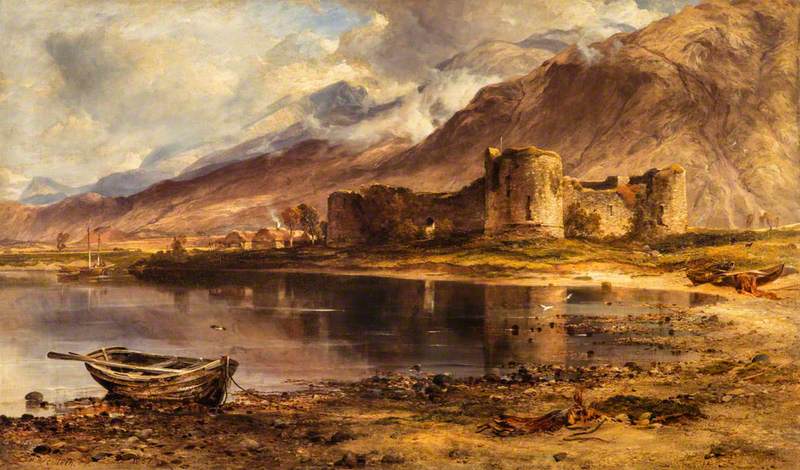
The tradition for Scottish landscape painting continued into the nineteenth century and the Scottish Highlands tended to be the main focus of the art work. The emphasis was on the dramatic scenery and awe of the natural landscape in a time when other areas of Scotland were becoming more urbanised with the onset of the industrial revolution. Some of the more notable Scottish landscape artists of this time were Horatio McCulloch, Joseph Farquharson and William McTaggart.
The Pre-Raphaelite movement also had a presence in Scotland in the form of artist William Dyce. The Pre-Raphaelites rejected the Royal Academy’s views that Raphael’s artwork was the ideal and went against the mechanistic approach to painting and believed in elegant compositions and Classical poses and were urged ‘to go to nature’.
The Glasgow School (around 1870 AD – 1910 AD)

In the late nineteenth century a selection of artists that were based in the Glasgow area formed a group known as the Glasgow School. These artists and designers had a blend of art styles from Celtic revival to Arts and Crafts that resulted in contributing to Art Nouveau. The subjects of the art work tended to be based on nature or rural Scotland and showed a passion for realism and change.
One of the most well-known members of The Glasgow School was Charles Rennie Mackintosh alongside Thomas Millie Dow, Edward Atkinson Hornel, David Young Cameron and John Quinton Pringle.
Modern Scottish Art (around 1920 AD - 1950 AD)

There are several movements during this period so here are a few that have a notable Scottish presence.
The Scottish Colourists were influenced by Fauvism which favoured strong colours and styles rather than a realistic approach and this group of Scottish artists included painters such as Francis Cadell and John Duncan Fergusson who was a painter and sculptor.
The Edinburgh School were a group of artists who were connected with the Edinburgh College of Art after World War I and up to the mid-20th century. Their influences came from the St Ives School and French painters and they created paintings of landscapes, interiors and still-life paintings in non-natural colours. Among the members was artist Anne Redpath who used her family background in tweed designing as inspiration for her paintings and her use of colour.
The Scottish Renaissance was a movement within art and culture that found an interest in the modern technological developments and folk influences and a concern about the dying Scottish language. One of the artists involved with this movement was Stanley Cursiter and his early works were influenced by Celtic revival, cubism and futurism but he later adopted a more realistic style.
Contemporary Scottish Art (around 1950 AD – current)
After World War II, art in Scotland took various paths from those artists influenced by Pop Art and abstract expressionism to those that joined the St Ives School and where inspired by landscape. Robert MacBryde was known for his colourful cubist paintings and then for his expressionist still life’s in the 1940’s and 50’s.
From the 1980’s a group known as the New Glasgow Boys emerged and took an interest in painting the human figure and social and political issues, which went against other trends towards pop art, conceptual art and abstraction, at the time. Members included Ken Currie, Peter Howson, Stephen Conroy, Steven Campbell and Adrian Wiszniewski who all had an association with the Glasgow School of Art.
There is now a wonderful range of contemporary Scottish art available from landscapes to figurative works and Scotland has a thriving art and culture scene. Here are a few of our chosen contemporary Scottish artists available at Enid Hutt Gallery below.
Contemporary Scottish Artists
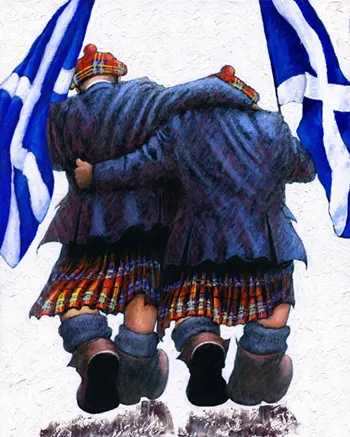
Alexander Millar
Born in Springside, Scotland where he grew up observing the mining community going about their daily route, he captures the essence of the working man and a nostalgic atmosphere in his paintings.
Pictured: United We Stand
View Alexander Millar Art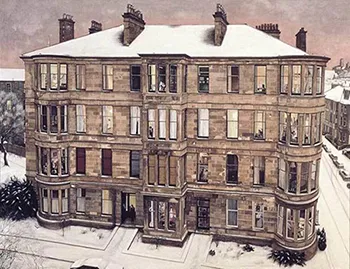
Avril Paton
Living in Glasgow since 1983 her work depicts the people and places of the city as well as a collection inspired by her memories of Arran. She captures the everyday vibrancy of Glasgow and the character of the people within it.
Pictured: Windows in the West
View Avril Paton Art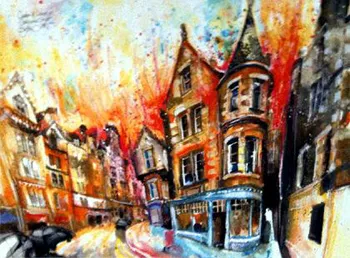
Blythe Scott
Blyth grew up in Glasgow, and she has a passion for architecture both new and old. Her urban scenes are expressive and brightly coloured and tend to use mixed media to get different textures and effects.
Pictured: Curves & Corners on Cokburn Street, Edinburgh
View Blythe Scott Art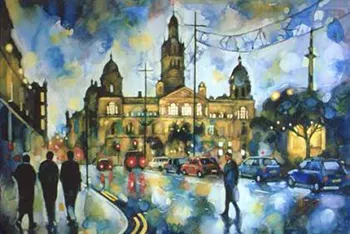
Bryan Evans
Living and working in Glasgow he often creates paintings of the rainy streets of Scottish cities and towns as well as coastal scenes. The watercolour scenes perfectly capture the feel of raindrops but still hold the vibrancy and colour of the lights, trees and buildings.
Pictured: George Square
View Bryan Evans Art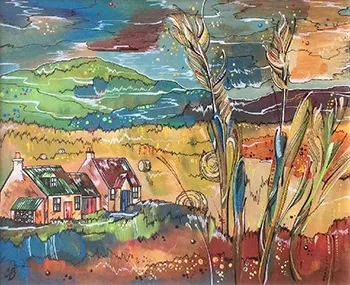
Camassia Bruce
Studied at Duncan of Jordanstone College, Dundee, Camassia uses a bold and colourful palette to create stunning Scottish landscapes and coastal scenes. Cheerful and slightly whimsical, her acrylic paintings have a touch of mythical or fantasy about it that is simply charming.
Pictured: Five Bales
View Camassia Bruce Art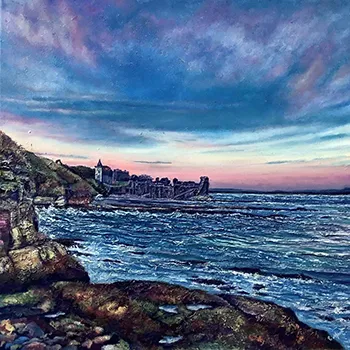
Catriona MacEachen
Based in Fife her dramatic landscapes and seascapes are breathtaking paintings that have a skilled use of light and colour. Inspired by her roots in the Hebrides she often heads there for inspiration and to see the sunset or sunrise.
Pictured: High Tide at St. Andrews Castle
View Catriona MacEachen Art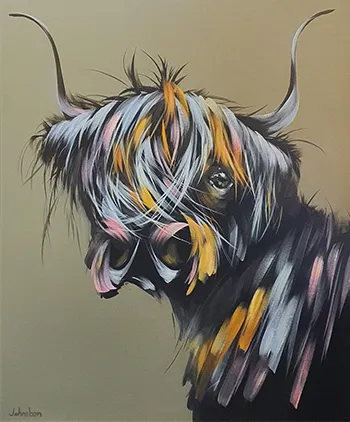
Elaine Johnston
Artist Elaine Johnston was born in Glasgow, and attended Glasgow School of Art. Award winning and featured in publications across the globe, her artworks often feature Scottish wildlife and animals such as highland cows, stags, hares and golden eagels.
Pictured: McDougal
View Elaine Johnston Art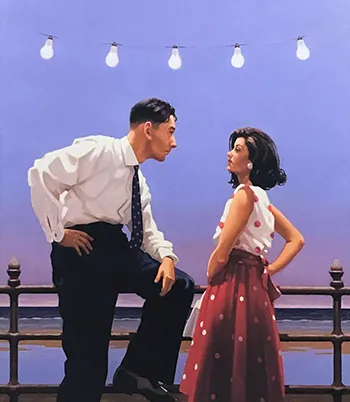
Jack Vettriano
Born in Fife in 1951 he taught himself to paint. His figurative paintings seem to tell a story and often feature strong, beautiful women and classic masculine silhouettes. His style echoes the 1930’s and 40’s and yet still incorporates glimpses of modern times.
Pictured: The Big Tease
View Jack Vettriano Art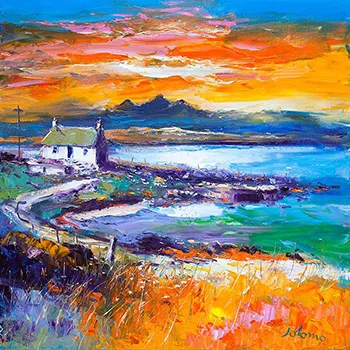
John Lowrie Morrison OBE
Also known as JoLoMo, he has roots in the Outer Hebrides and is predominately a landscape painter using bright and bold colours to create dramatic artworks. Often his landscapes include whitewashed houses (croft dwellings) and coastal views.
Pictured: A Jura Sunset from Port Nan Gallan, Keills
View John Lowrie Morrison Art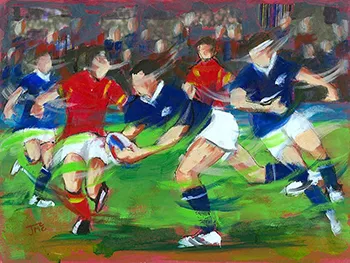
Janet McCrorie
Born and bred in Scotland, Janet McCrorie often uses Scottish dancing or sports such as rugby as key themes in her paintings. They are filled with vibrancy and movement as they capture the excitment and energy of the people.
Pictured: Well Held
View Janet McCrorie Art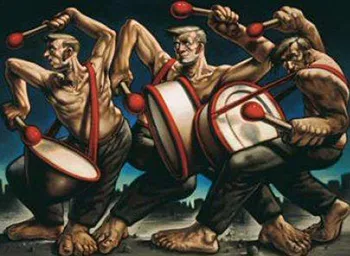
Peter Howson OBE
Attended Glasgow School of Art, his figurative paintings are raw and show an unforgiving perspective of the human condition. Having been mentally unwell himself his works explore humanity, especially the human face and expression.
Pictured: Drum II
View Peter Howson Art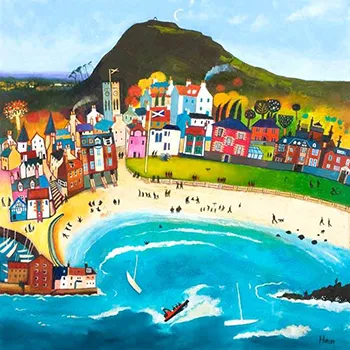
Rob Hain
Living in his adopted home of Scotland and working from a studio in Selkirk his Lowry inspired paintings are colourful and have an abstract composition. His fondness for community can be seen in the works.
Pictured: Day Out, North Berwick
View Rob Hain Art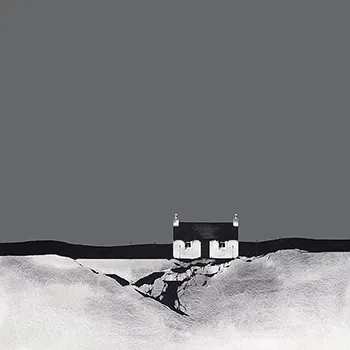
Ron Lawson
Born in Midlothian in 1960 on a farm, his landscape paintings carry a distinctive style and often depict sparse landscapes inspired by the Western Isles of Scotland. These paintings are dramatic and yet peaceful with their vast skies and signature white crofters cottages.
Pictured: White House
View Ron Lawson Art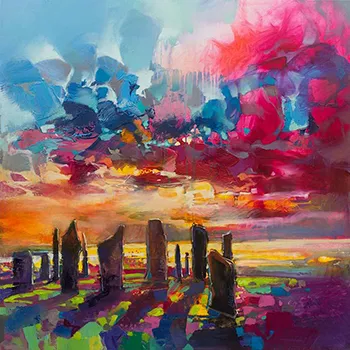
Scott Naismith
Working from his studio in Glasgow, Scott Naismith creates striking colourful paintings that are inspired by the unqiue atmosphere of Scottish skies and landscapes. He travels around Scotland to explore a range of lochs, glens and isles and uses these experiences for his artwork.
Pictured: Callanish Stones
View Scott Naismith Art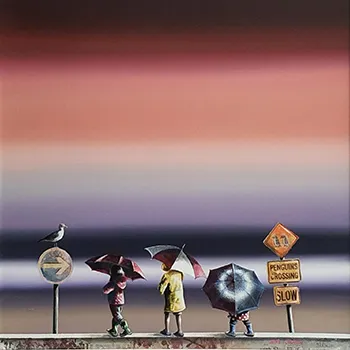
Steve Johnston
Born in Glasgow and attended Carlisle Art College he opted for photography over paint early on and his work has been included in Vogue and for several years he worked for i-D magazine. He switched back to painting in 1991 and his artwork is inspired by the shape of the human body often portrayed against a vast washed background with an ephemeral quality.
Pictured: Penguin Crossing
View Steve Johnston ArtHere at Enid Hutt we stock a wide range of Scottish art including original paintings, limited edition prints, posters, and sculptures online or our two galleries based in Aberdeen and Kirkcaldy. Feel free to contact us for more information or if you have any questions.
Source: "Scottish Art." Wikipedia, The Free Encyclopedia. Wikimedia Foundation, Inc http://en.wikipedia.org/wiki/Scottish_art
